Click on the pictures (including the panoramic views) to enlarge them.

Namibian tracks and natural curiosities meet. The road unfolds and the uncertain gravel spurts under the weight of the vehicle. A hazard roadsign indicates the skid risks and with good reason... First fright of the trip with an off-the-track escapade. The high, yellowish, sunburnt grass bends to receive us. Everyone is safe, so is the car. We arrive in a whole part at Sesriem, entrance point for the Sossusvlei dunes.



The sun sets and we cover the 4.5km standing between us and the Sesriem canyon, a little trench within the stone laying down a sandy bed. Soon, the rock outline fades and the dusk floods the small canyon with obscurity. We drive back to set up the tent at the campsite of the NWR-ran park – NWR is a national company that manages most of the national parks. And we notice the Namibian government opted for a luxury tourism since the slightest night in a lodge is between 100 and 150 euros per person and the campsite comes to 25 euros per person but that is the only way if we wish marvelling at a sunrise over the red sanddunes of this part of the Namib desert. The gate of the park stays close for the « non-residents » until 6h45, a too late time to cover the 60 kilometers from the dunes before the sun starts rising.
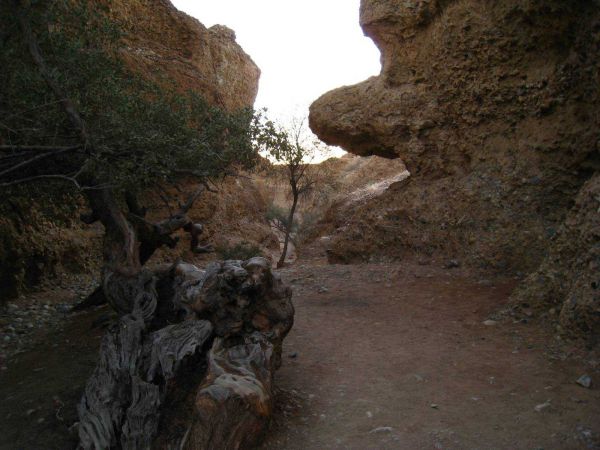


Wake up at 5 am, fast breakfast, we put on shorts, a tee-shirt, a polar jacket and we leave for one of the most scenic spot in Namibia, the giant dunes of Sossuvlei. The ash dark veil of the night hardly dispels we begin climbing the dune number 45. A pilling up of sand we struggle up so much our feet sink in. But what a reward at the top! Day after day, the sun rises and sets amidst total indifference. There's however sunrises which engraves on the memory forever. Here is one of them. The first rays spurt from behind the rock that blocks the horizon. From the top of our dune we contemplate the other sand-made blazing colossuses. The morning wind sweeps the silica atoms that build these huge natural walls. Behind the unpronounceable name of Sossusvlei, hide the greatest sandunes in the world, ours is about 200 meters high while others can rise beyond the 300m.
We take off our shoes to feel the warm sand giving way under our feet. Our toes split up the ridge of the sand mountain and our eyes leap from a dune to another one without weariness, the cameras crackle and the emotion overwhelms us. Meeting between the African nature and the astral light for a breathtaking chromatic patchwork.








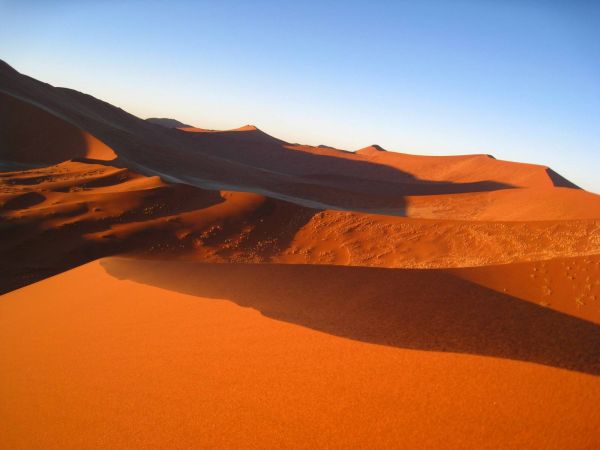











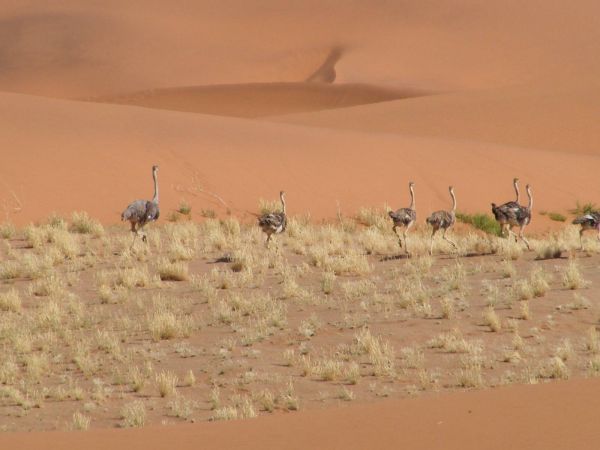
We keep on visiting the site and park the car at the end of the road. We yomp through a few dunes to reach Deadvlei. In the past, trees lived here but the aridity of the desert decided differently. The immortalized scene looks unreal. Trunks set in the white clay of a dried lake. It's probably in this strange place Salvador Dali drew his surrealist inspiration. We step on the dry earth while branches seems to writhe in pain in the scorching heat. 900 years the time froze the destiny of these trees. And a few centuries people marvel at. The surrounding red sand seems to respect this shrine. And the millions of particles gather together at the shore of the white expanse. The emotion still gnaws us.








Thus, an ordinary day in Namibia ends but an extraordinary one for the travelers we are.


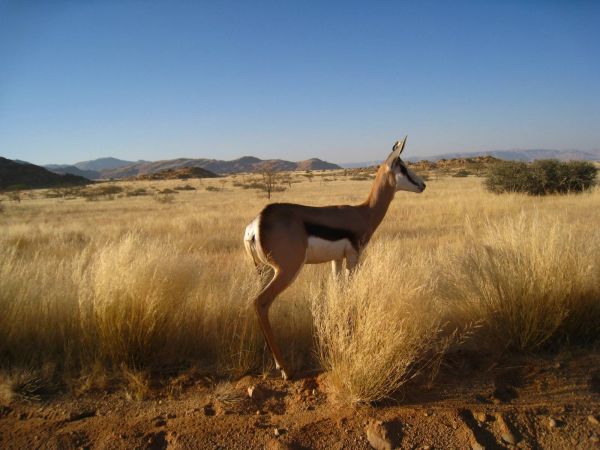
RTW2-Namibia
Sunday 22 June 2008
The surrealist painting of the Sossusvlei dunes
By dorian on Sunday 22 June 2008, 22:15
Friday 20 June 2008
The diamonds rush
By dorian on Friday 20 June 2008, 18:51
Lüderitz crystallizes the past, the present and the future of Namibia. A town founded by the German colonists when a diamonds deposit was found at the beginning of the century. The WWI German surrender leads to the colonists' expropriation and the country was put under the South Africa supervision before the country takes flight with the independence proclamation in 1990 what makes Namibia one of the youngest country in Africa. Lüderitz divides between the port activity – raw material freight like zinc intended to the countries of the northern hemisphere – and the diamond-mining. Around the city, a huge, forbidden area stretches where only the Namdeb company imposes its authority. Half of this company belongs to the Namibian government the other one to the undisputed diamond-business-leader De Beers firm.
To understand the universe of these precious stones, we go to the ghost city of Kolmanskop. Around the village the first Namibian diamond was found ; the Germans quickly besieged the place and the Kolmanskop tiny hamlet popped out of the ground. The village frenziedly lived a few years until the diamonds deposit dried up and new spots were discovered southwards. The houses were abandoned and the area became uninhabited. Thus, the life goes at the diamond kingdom and its diggers that follow the vein.
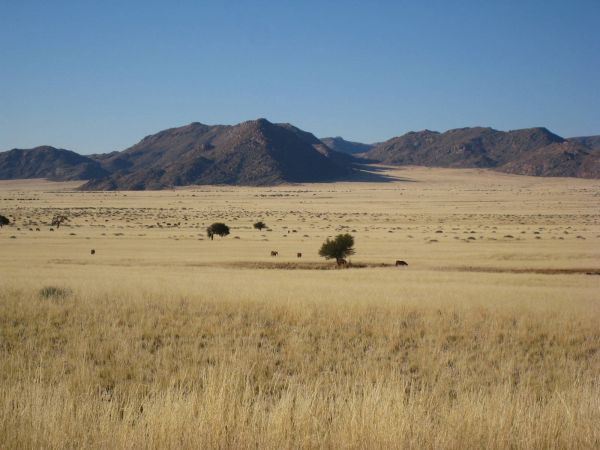
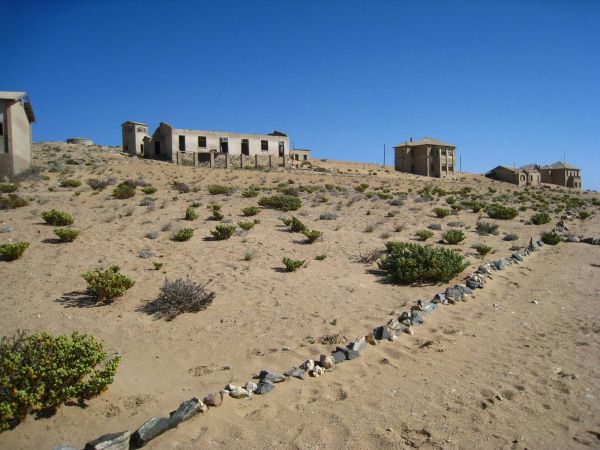
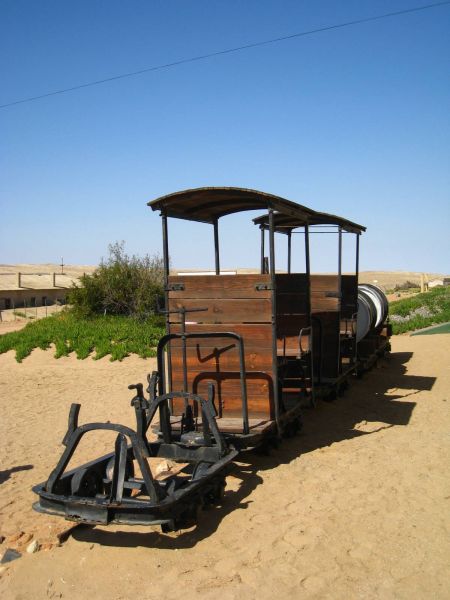

In the afternoon, we visit the coastal landscapes in the surroundings of Lüderitz. Desert beaches, black rock and a seal colony that lounge on a stony islet.
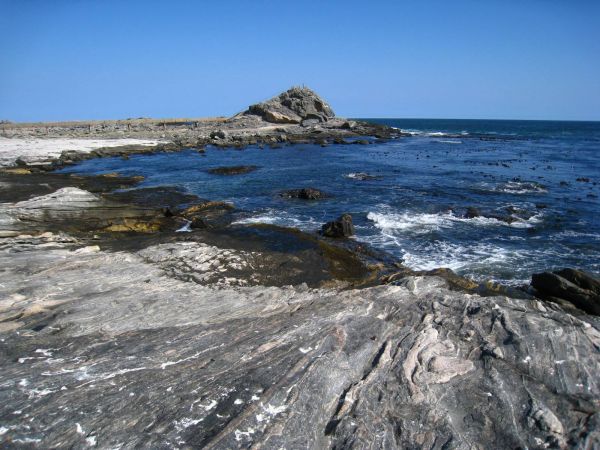
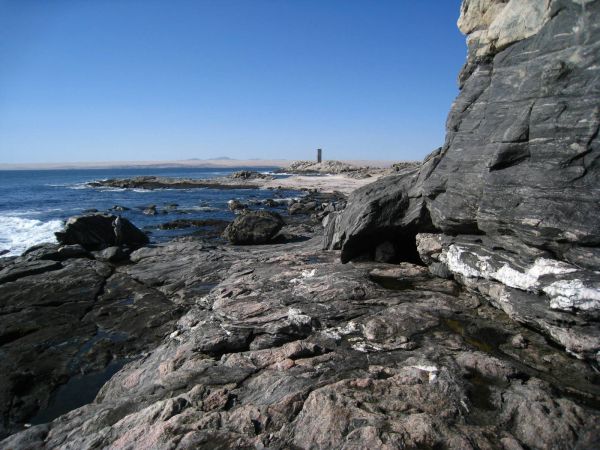
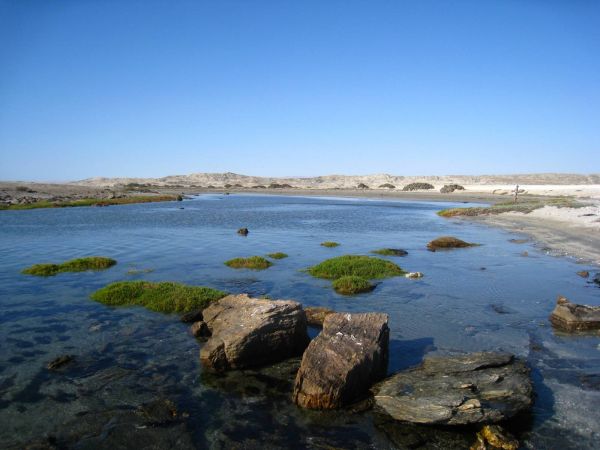
Back from our stroll, we seize shovel and mattock to turn over the sand of Agatha Beach. But that's not ground-buried diamonds we find here but modest sand roses. Andrès, from the tourist office, teaches us how to dig out these natural curiosities that, as soon as we discover them become our jewels. You need to scratch the sand then when the salt traces appears, we delicately delimit the hard « zone » before getting it out. A dash of water to clean the rock and sand mixture and the petals of the silica rose starts to glisten in the beams of the sunset. Happy, we go back with our fragile booty which stretches at the rear window shelf of the car.
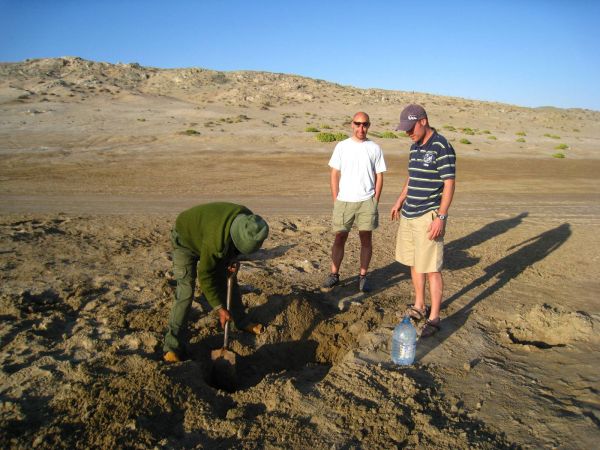
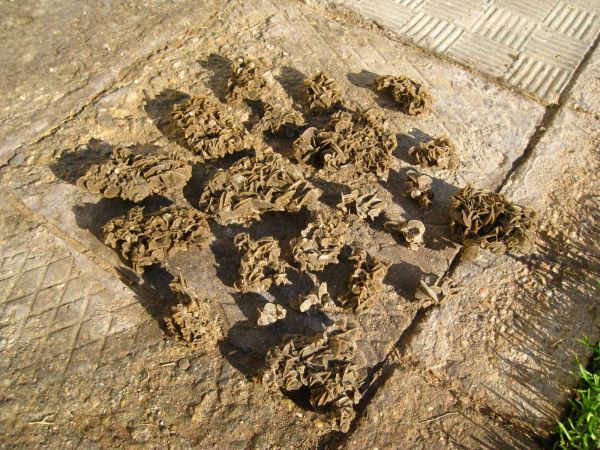
Thursday 19 June 2008
The maze of Fish river canyon
By dorian on Thursday 19 June 2008, 16:19
To inaugurate the « unlimited mileage » package of our hire Opel Corsa, we decide to head for Namibia. The South-african discovery will fill the second part of the trip. The asphalt ribbon unrolls over 700km up to the south Namibian border. The road is desesperately straight and the dotted line on the ground as hypnotizing as the triteness of the scenery. We spend the night just after the border crossing.
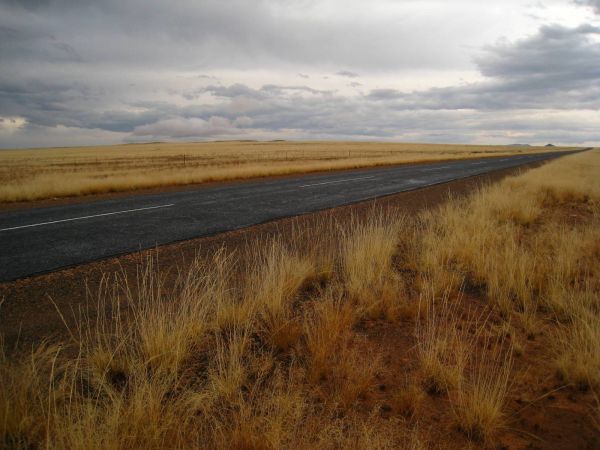

In the morning, we start our first untarred road to reach the Hobas village. On the way, we catch sight of elegant springboks which look us up and down before clearing off making some prodigious several-meter leaps. A rectangular water tank and few huts announce the beginning of Hobas. This village is the departure point to visit the Fish river canyon; the second largest canyon in the world after the Colorado one in the USA. Unlike its elder brother we can only follow inside by kayak, a trail describes the meanders of this canyon. A great 5-day 85-kilometer trek to reach the Ai-Ais village and the possibility to catch a shuttle back to Hobas. However before embarking on the path, a local responsible requires a medical certificate for the trekking ability we don't have. Impossible to negociate, we'll have to content ourselves with admiring the canyon from the upper part. We thought about looking for a doctor in the campsite beside the village but we finally changed our mind.
A long, straight, clay-reddish, about-10-kilometer lane ends on a viewpoint. The monotony in no way unveils what is waiting for us. We slam the door and the suspense is still there. A few steps ahead and the fracture suddenly appears. A break as emotionnal as geological. In the past, a plain that a river gnawed for millions of years and down to several hundreds meters deep. A grandiose spectacle. Hairpin curves, rocky different-level plateaus, sharpened astoundingly-proportioned ridges. Long minutes of silence to contemplate, to scan and to get intoxicated.
And to wonder at all of this, less that 10 tourists. Lucky we are, but for sure the touristic potential in Namibia is huge and the authorities take a long time developping it.
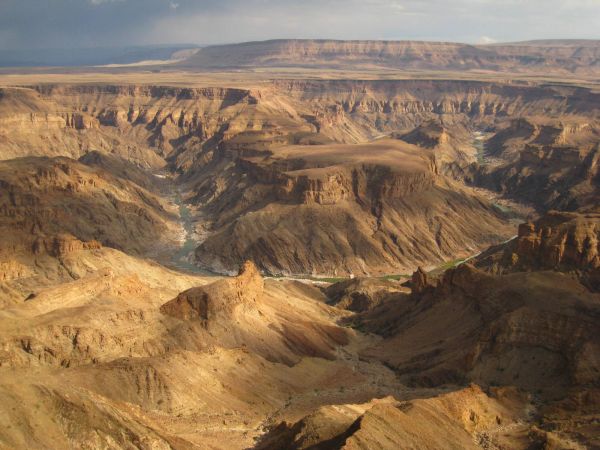
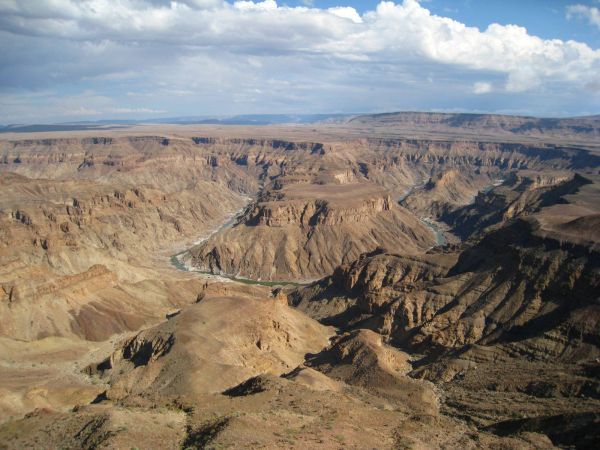
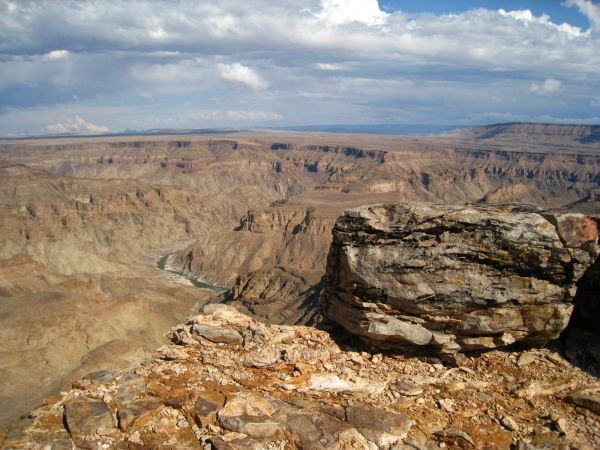
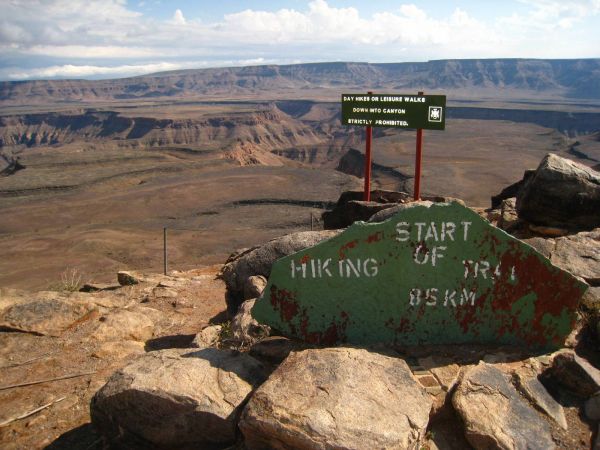
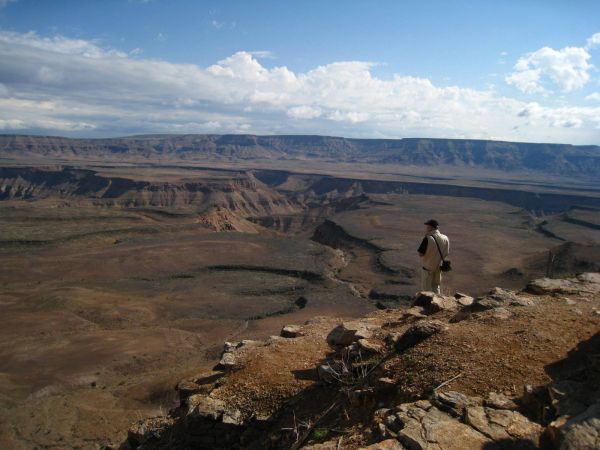
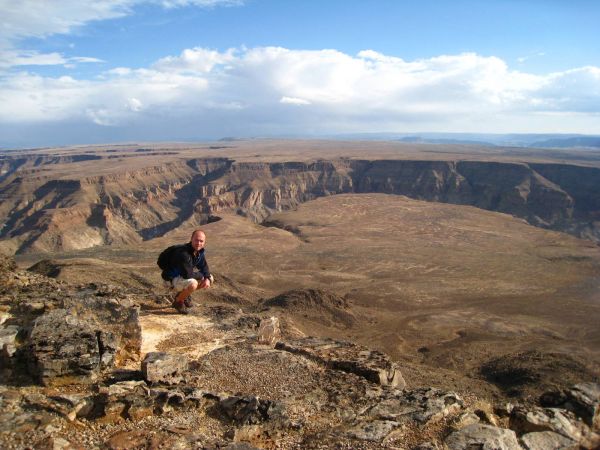
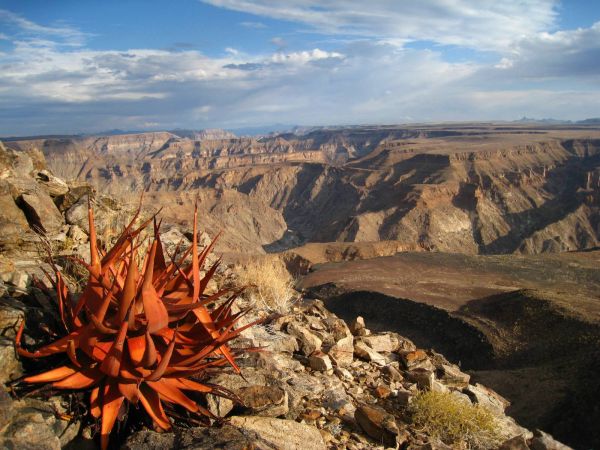
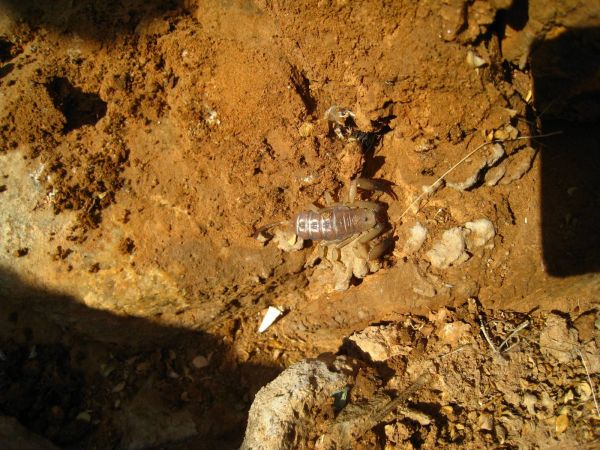
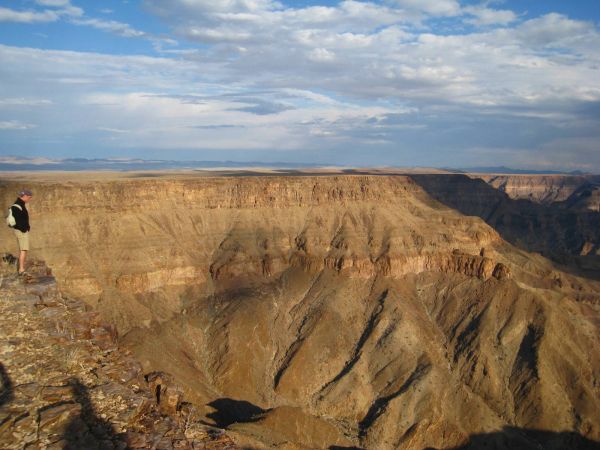
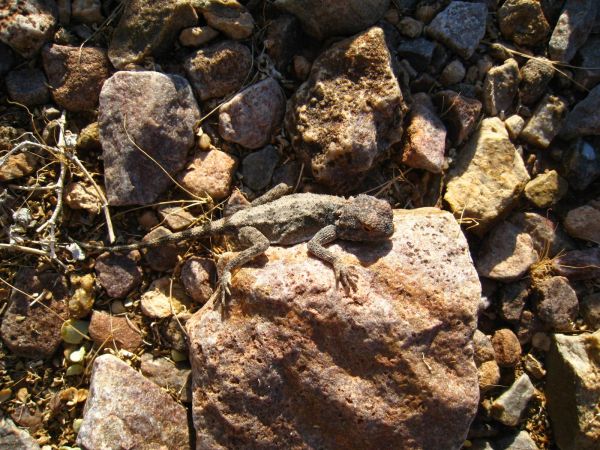
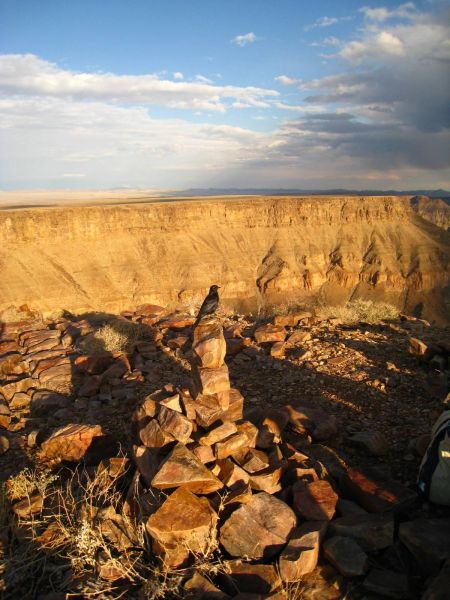
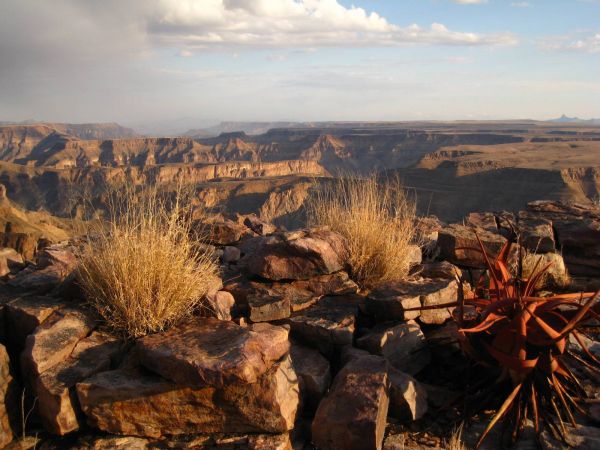
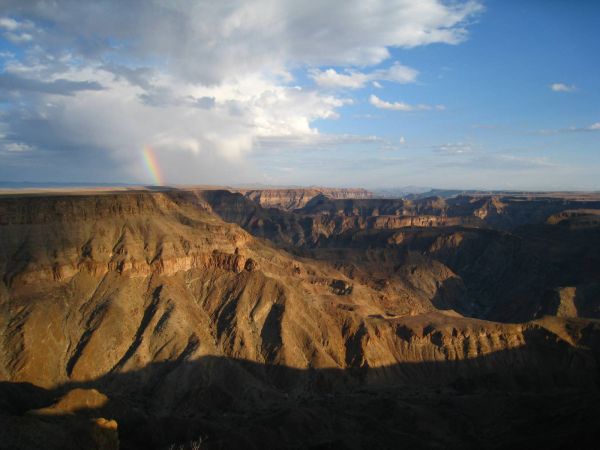
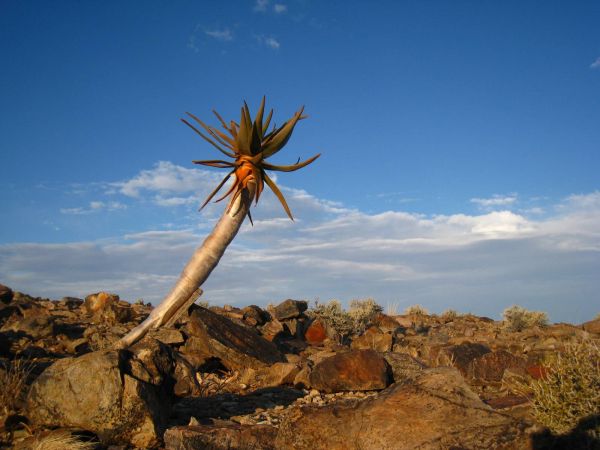
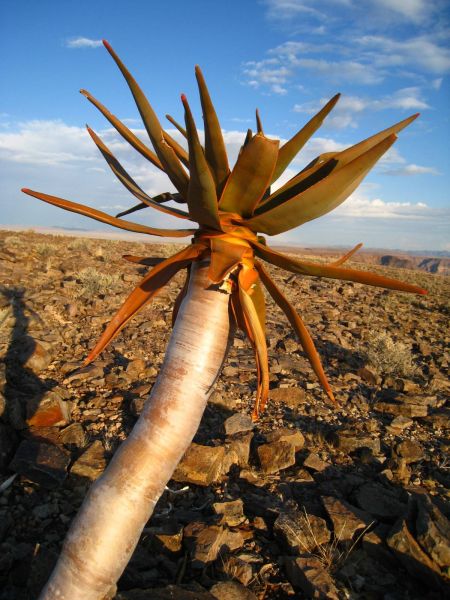
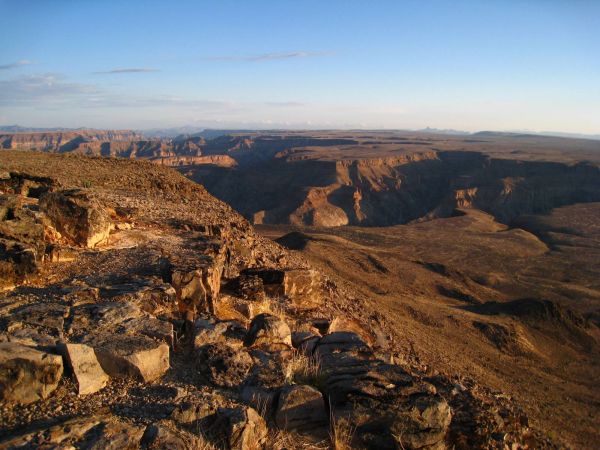
The next day, back at the scene to enjoy a sunrise. The day goes on at the edge of the cliff. Strange trees dot the dry ground, they are called the kokerboom or « quiver trees » A tree and cactus blend. It's among its gnarled branches the social republican has decided to build its nest. This bird helped by mates build the nest for the whole community. A giant multiple-entry nest. Their motto: to take the advantage of the fellow-citizens mutual aid in order to have a low-cost accomodation but keeping a sort of privacy however.
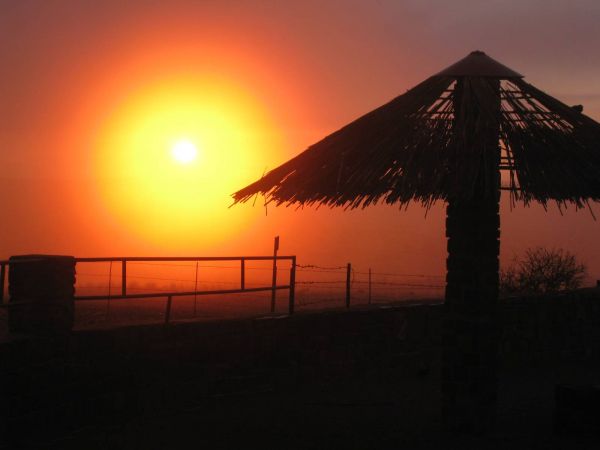

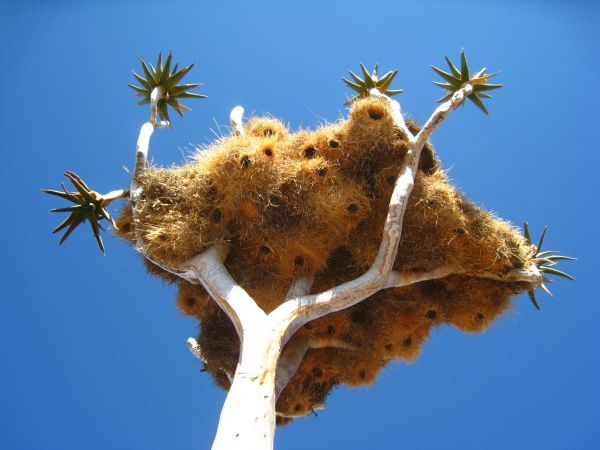
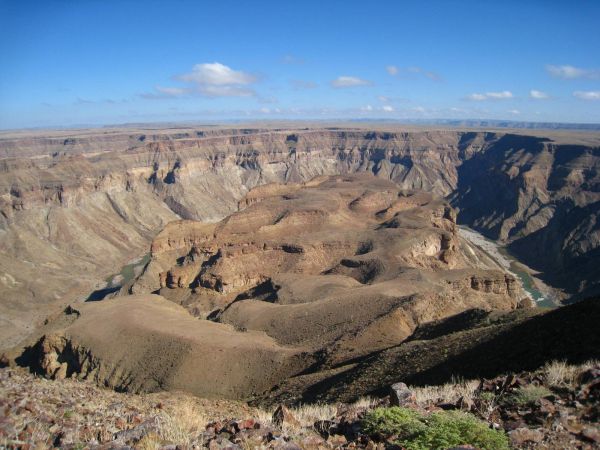
page 3 of 3 - next entries »





 visits
visits